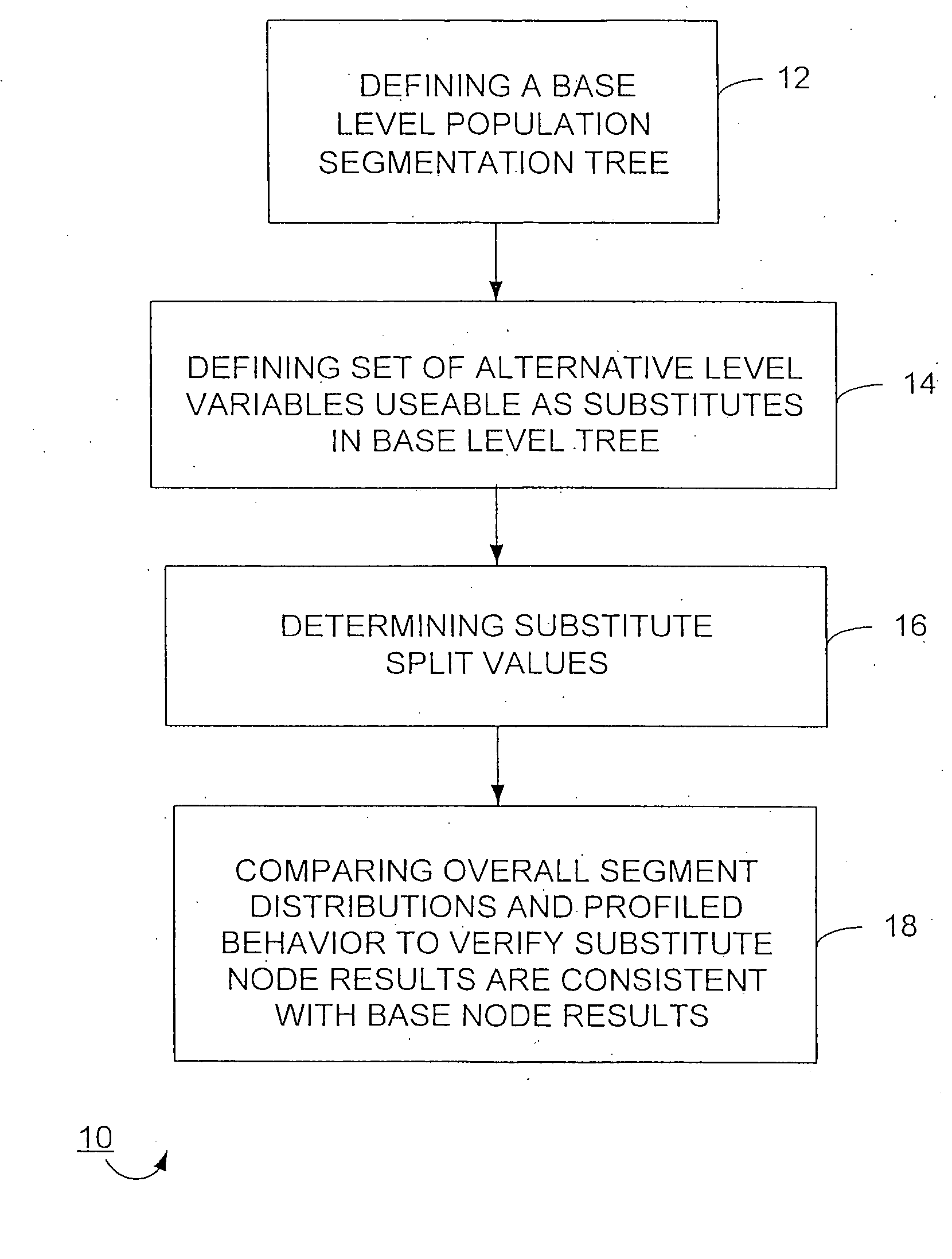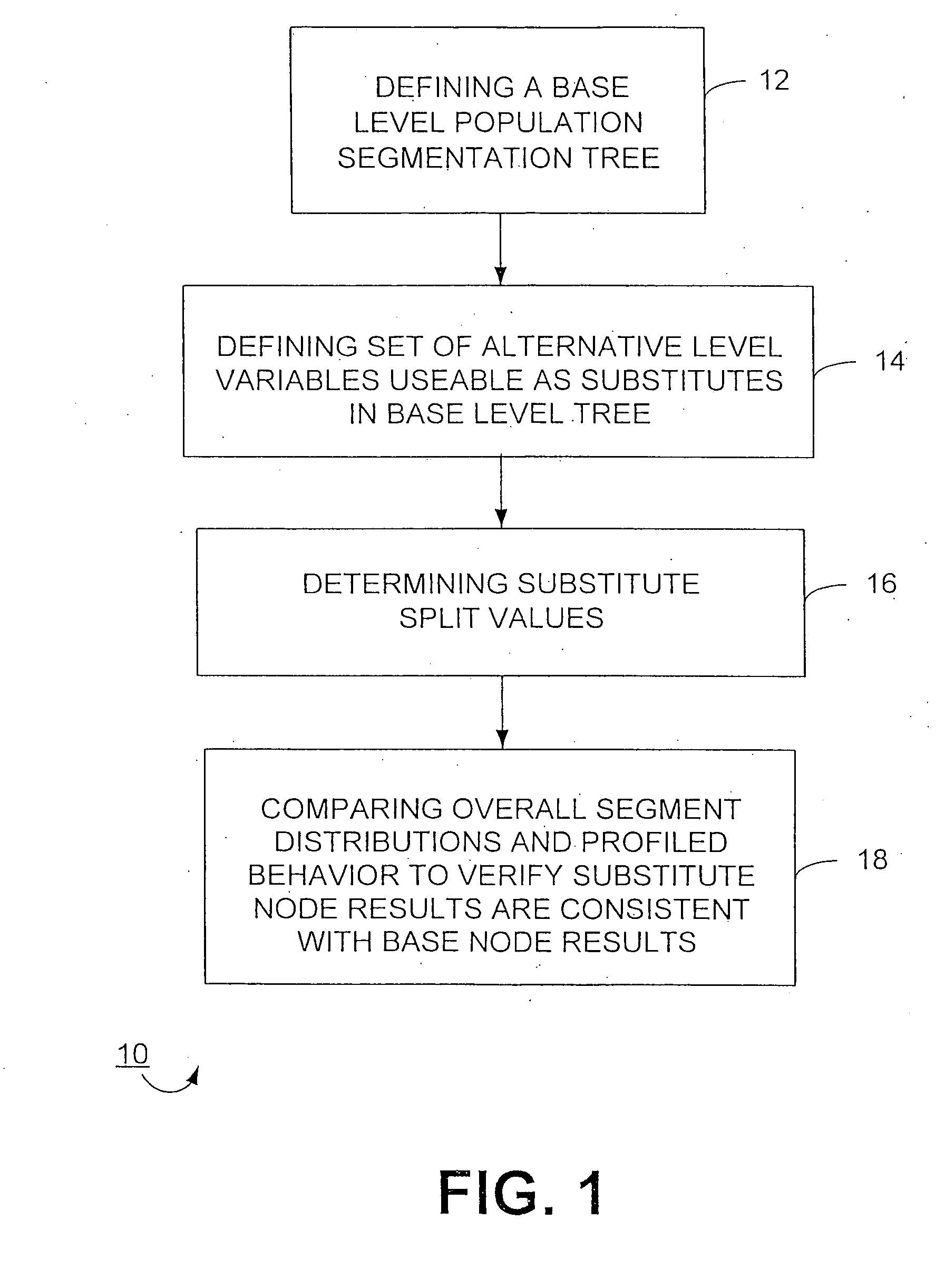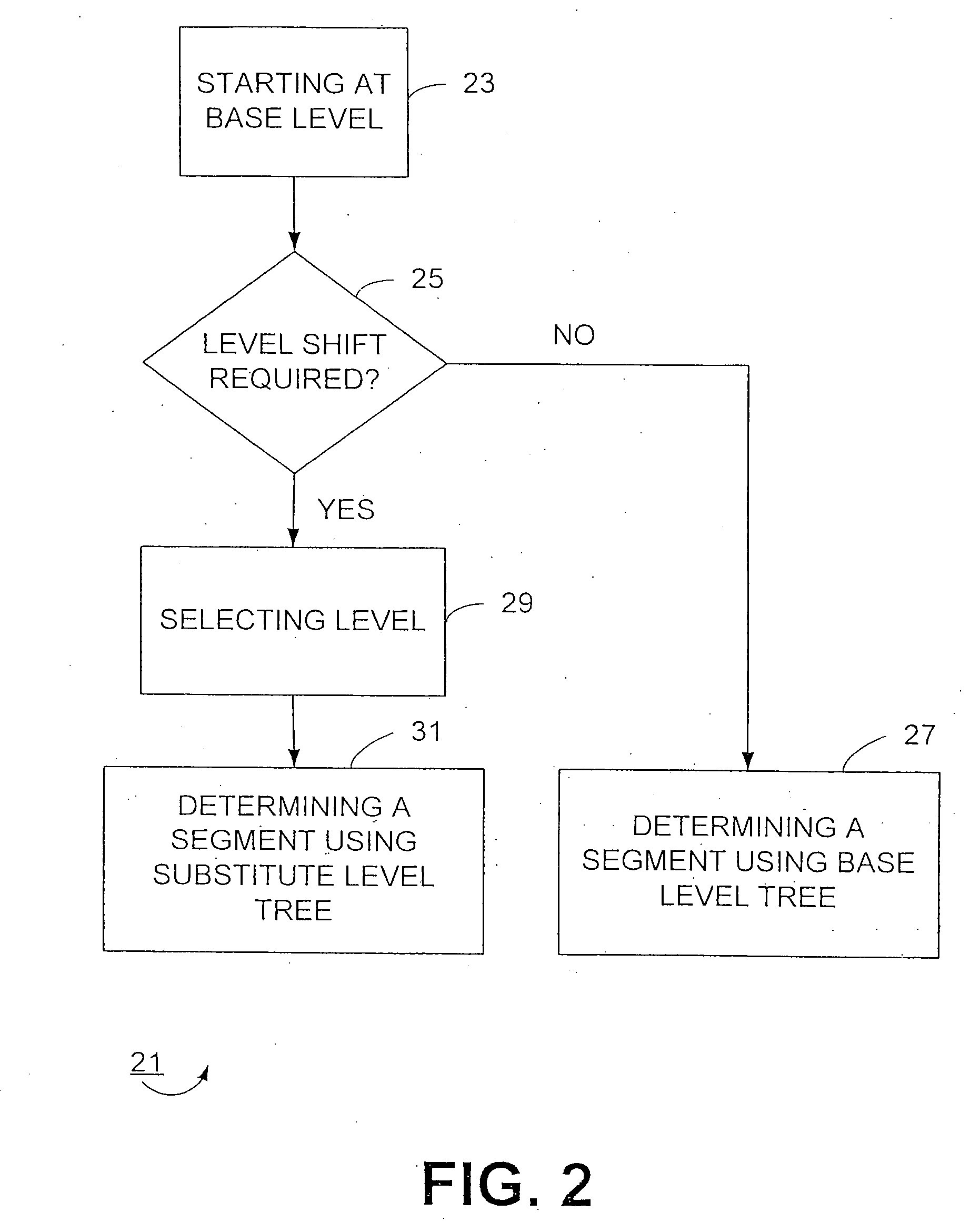Method and apparatus for population segmentation
a population and method technology, applied in the field of population segmentation, can solve the problems of limiting the usability of consumer segmentation for many applications, unable or unable to apply to segment secondary or alternative data sets, and limiting the effective use of individual data
- Summary
- Abstract
- Description
- Claims
- Application Information
AI Technical Summary
Benefits of technology
Problems solved by technology
Method used
Image
Examples
Embodiment Construction
[0024] Referring now to the drawings and, more particularly, to FIG. 1 thereof, there is shown a developmental method, which is generally indicated at 10 and which is undertaken according to an embodiment of the invention. The method 10 generally comprises the defining of a base level population segmentation tree as indicated at box 12. The base level for the tree may be the household level. Such a tree method is disclosed in co-pending U.S. Patent Application, entitled “HOUSEHOLD LEVEL SEGMENTATION METHOD AND SYSTEM” and assigned application Ser. No. 09 / 872,457 filed Jun. 1, 2001, the application being incorporated herein by reference as if fully set forth in its entirety.
[0025] It is indicated in box 14, a set of alternate level variables are defined to be usable as substitutes in the base level tree as hereinafter described in greater detail. As indicated at box 16, the substitute split values are determined for each node of the base level tree, as further explained in greater d...
PUM
 Login to View More
Login to View More Abstract
Description
Claims
Application Information
 Login to View More
Login to View More - R&D
- Intellectual Property
- Life Sciences
- Materials
- Tech Scout
- Unparalleled Data Quality
- Higher Quality Content
- 60% Fewer Hallucinations
Browse by: Latest US Patents, China's latest patents, Technical Efficacy Thesaurus, Application Domain, Technology Topic, Popular Technical Reports.
© 2025 PatSnap. All rights reserved.Legal|Privacy policy|Modern Slavery Act Transparency Statement|Sitemap|About US| Contact US: help@patsnap.com



